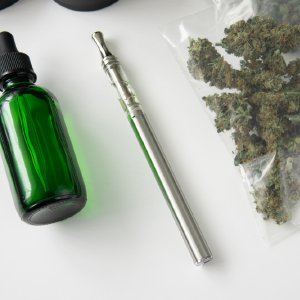E-Cigarette Deaths and Resulting Bans—Exploring the Controversy

All you have to do to get the public in an uproar about something is to talk about how dangerous that thing is for young people. And that’s perfectly understandable. We are inherently inclined to protect our young. When it becomes evident that something is potentially dangerous to our youth, millions of parents across the country rise up and demand change.
We see this now in the recent news of several deaths linked to vaping and the use of e-cigarettes. This development has caused an uproar in the United States, causing a few states and even the federal government to consider banning electronic cigarettes and vaping paraphernalia.
I’m all for the nation taking action to protect the health of its citizenry. But it is a little more than suspicious that state and federal-level governments are taking such decisive action against e-cigarettes when we still have a pharmaceutical drug addiction epidemic that kills thousands of people every year. Why are so much attention and effort being taken against the e-cigarette industry while the pharmaceutical industry is still allowed to create such harmful and addictive drugs?
Americans Take Up Arms Against E-Cigarettes
CNN released a report on September 17th, announcing that New York State banned most flavors of e-cigarettes. New York State also levied a significant, 20 percent tax against what few flavors and brands it did not prohibit. And New York State is not the only state to move in this direction. Michigan banned all sales of all flavored e-cigarettes. And on a federal level, the current administration is proposing a new enforcement policy that would require e-cigarette manufacturers to remove their flavored products from the market.

An article in the Guardian reported on the recent developments. Deborah Arnott, chief executive of Action on Smoking and Health, gave a statement for the Guardian report. She stated: “In the U.S. every day, almost 2,500 children under 18 years of age try their first cigarette, more than 400 of them will become daily smokers. Half of all long-term smokers will ultimately die from smoking, amounting to 480,000 Americans a year. Children in the U.S. commonly start by smoking menthol cigarettes, so why is the government leaving menthol cigarettes legal, while banning all flavors in e-cigarettes?”
Mrs. Arnott raises a valid point. Why the sudden attack against e-cigarettes when there are other substances that young people experiment with which have harmed young people for decades?
A Biased Focus in Policy Change
Again, I am all for state and federal regulation on substances that are harmful to our health. I only wish that state and federal governments gave due recognition to various health risks based on the degree of risk that those substances present to us. Single-digit deaths from e-cigarettes are seeing emergency-level action being taken on state and federal levels. Why haven’t massive steps been taken to remove dangerous pharmaceuticals from the market? Pharmaceuticals that kill thousands of Americans every year?
The Danger of Young Adult Prescription Drug Abuse
If we are going to talk about health threats to our youth, we cannot have this conversation without including a discussion about prescription drugs. When comparing numbers, far more young people suffer and die from prescription drug use than from e-cigarette use. And at the forefront of the prescription drug abuse epidemic, we see opioid pain relievers as being the most common and the most harmful drug used by adolescents, teenagers, and young adults.
Quoting the United States Department of Health & Human Services, “In 2016, 3.6 percent of adolescents ages 12-17 reported misusing opioids over the past year. This percentage is twice as high among older adolescents and young adults ages 18-25. The vast majority of this misuse is due to prescription opioids, not heroin.”
And as if the fact that young people are experimenting with prescription opioids was not concerning enough, these habits lead to overdose deaths. Furthermore, overdose deaths among adolescents are increasing. Again quoting the Department of Health & Human Services: “In 2015, 4,235 youth ages 15-24 died from a drug-related overdose; over half of these were attributable to opioids.”
“Among young adults, for every death due to Rx drug overdose, there were 22 treatment admissions and 119 emergency room visits.”

And as if the fact that young people are experimenting with prescription opioids was not concerning enough, these habits lead to overdose deaths. Furthermore, overdose deaths among adolescents are increasing. Again quoting the Department of Health & Human Services: “In 2015, 4,235 youth ages 15-24 died from a drug-related overdose; over half of these were attributable to opioids.”
And last but not least, it’s not just the deaths we should be worried about. Young people are harmed in other ways from prescription drug misuse. According to the National Institute on Drug Abuse “Among young adults, for every death due to Rx drug overdose, there were 22 treatment admissions and 119 emergency room visits.”
Young people also seem more at risk to becoming addicted to prescription drugs. The media, as well as state and federal governments, are clamoring over the health risks and addictive nature of e-cigarettes. But what about prescription drugs? Quoting a study of teen prescription drug abuse published in the U.S. National Library of Medicine “A recent study found that teens who reported non-medical use of prescription drugs to get high … were significantly more at risk to smoke cigarettes and/or marijuana, drink alcohol, and abuse several other drugs. Finally, adolescents who abuse prescription medications risk becoming addicted to them; a risk heightened for this age group.”
If certain prescription drugs are so dangerous to young people, why are our governments not taking up arms against those prescription drugs? Why aren’t prescription drugs being universally banned and removed from pharmacy shelves?
We could pause for a moment to “follow the money.” We already know that pharmaceutical lobbying is a powerful influence in Washington, D.C. We also know that pharma companies influence doctors too, encouraging medical experts to prescribe their products. We could also view similar trends in Big Tobacco, at least with lobbyists on Capitol Hill. If we follow the money, it soon becomes apparent that vaping poses a threat to such big companies. When teens vape, they might not smoke tobacco. When teens vape, they might not take prescription drugs.
Following the money gives us some ideas as to why vaping is being so heavily attacked, yet other, potentially dangerous substances, like tobacco and prescription drugs, are not receiving as much attention.
So what can the average person do to address all of the substances that young people might experiment with? Substances that might be harmful to them?
Demanding Change and Helping Those Who Are Addicted
If we are going to make changes in the availability of e-cigarettes, we must also do the same for other substances that are widely available yet which are dangerous to the health of our youth. That includes substances like prescription opioids, tobacco, alcohol, etc. We cannot label one substance as the ultimate scapegoat and not focus our attention on other substances which kill thousands of young people every year.
And what should we do, on a local level, if we know a young person who is struggling with an addiction to prescription drugs? The best course of action is to help that individual get into a residential drug and alcohol addiction treatment center. Residential rehabs offer the safest and most effective approach for helping people to break free from the harsh reality of life as an addict. So by the use of regulation, education, prevention, raising awareness within our communities, and treating those who are addicted, we can effect positive change within our communities. But we have to address all of the health risks. Not just one of them
Sources:
- https://www-m.cnn.com/2019/09/17/health/new-york-ban-on-flavored-e-cigarettes/index.html
- https://www.theguardian.com/society/2019/sep/15/how-safe-is-vaping-e-cigarettes-deaths-bans
- https://www.hhs.gov/ash/oah/adolescent-development/substance-use/drugs/opioids/index.html
- https://www.drugabuse.gov/related-topics/trends-statistics/infographics/abuse-prescription-rx-drugs-affects-young-adults-most
- https://www.ncbi.nlm.nih.gov/pmc/articles/PMC4827331/
Reviewed and Edited by Claire Pinelli, ICAADC, CCS, LADC, RAS, MCAP

